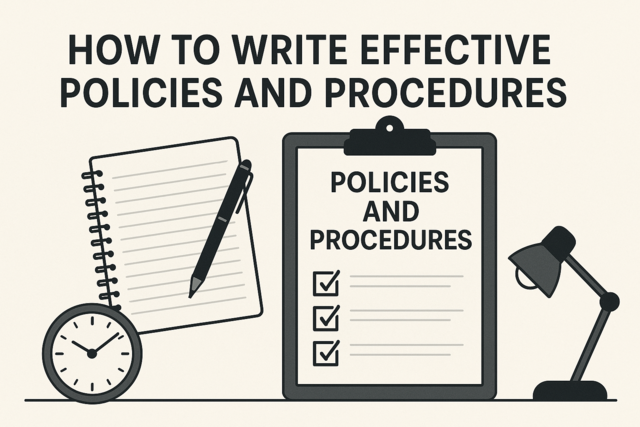Filling Out Professional Objective and Education Section in Your Resume
Objectives
In this article, you will learn how to compose your professional objective, as well as the education section of your resume.
- Why should you consider designing a professional objective?
- What should be included, and what should be left out?
- What kind of educational experience should be on your resume?
- How should the education section be presented?
The professional objective is usually listed near the top of your resume, just below your name and contact information. It is a statement that clearly demonstrates your goals and objectives in applying for employment.
Not all job seekers will choose to include an objective on their resumes. For those who do, however, they will want to put some quality thought and effort into ensuring that the objective that they compose has the highest possible impact. The space on your resume is very limited, so you do not want to waste any of it with "throwaway" content.
One of the advantages of including an objective is that you can easily "tweak" it to fit the particular job for which you are applying. This helps you to target particular employers as well as to set them up with certain expectations as they review your experience and skills. When you do this tweaking, you can make a point to use keywords that were mentioned in the job advertisement to spotlight that you are fit for the position. A second advantage is that it gives you an opportunity to demonstrate that you understand the field or industry for which you are applying.
When writing the objective, many job seekers just waste valuable real estate on their resumes. If you tell the employer that your objective is to gain employment that is challenging and utilizes your skills, then you really have not told them anything that is not perfectly obvious. After all, you would not be submitting a resume if you were not trying to gain employment, it should go without saying that you want a job that is interesting and not dull, and you cannot utilize anyone's skills but your own, right?
One way to create much more impact with your resume objective is to use it as an opportunity to tell the employer what you can do for them. Focus on them rather than yourself by using it to answer the question, "What can I do for you?"
For example, if you are applying for a bookkeeping position, you can use the objective to talk about how you wish to utilize your specific training to apply an ordered approach to the business' finances that will improve company efficiency and withstand IRS scrutiny. If you are an IT professional, you may want to use the objective to describe how your previous experience with a particular software platform can be used to keep the new company up-to-date and compliant with various licensing agencies. Consider choosing a skill that you can apply specifically to the employer and drive the idea home with your objective statement.
The Education Section
Those who have attended college, university, professional school, or technical school will generally highlight that education in this section. High school experience is usually not included unless you attended a specialized high school that is relevant to the job.
This section will include the name of the school, as well as the location. You probably will not list the entire address, but will include the city and state. If you have already graduated, put the date; and if you have not yet graduated, you should include your anticipated month and year of graduation. Of course, you should also include the degree that you earned (or plan to earn) from the institution. Finally, you may consider including your grade point average, or GPA. Most of the time, you will only want to include this if it is particularly high or if the employer specifically requests the information.
You will need to choose where to place this section on your resume. The decision should be based on the strength of your education in comparison with the other sections of the document. For example, a recent college graduate will likely focus heavily on the educational experience when talking with recruiters, and this section will therefore be high on the resume, likely just below the objective statement, if one is being used.
On the other hand, if your school days are long behind you and the real meat of your resume is found in the job history section, then you may want to showcase your relevant job experience at the higher level on the page. So this section then will come before your awards, honors, or achievements, which are usually found near the bottom of the resume.
Experience
The goal of this article is to learn what types of experience to include, as well as how to format them for the greatest impact.
- Which experiences should you consider including in your resume?
- What methods can you use to impress the reader?
- Should you combine topics or make each a separate section?
Take an Objective Look at Your Experience
When we talk about "experience" concerning a resume, we are referring to those activities in your life that make you particularly well qualified for a certain job. In some cases, these are quite easy to recognize. For example, if you have worked in the field for several years, then you have a job history that is quite relevant. On the other hand, if you are changing careers, to reenter the workforce, or are looking for your first real job, then you will have to rely on other types of experience to demonstrate your qualifications.
Obviously, job experience is one of most useful ways to show an employer that you have what it takes. If you are applying for a general manager position and can demonstrate through this section that you have worked up from entry level to a more responsible position, and then into an assistant management role, this section of your resume is going to be extremely important in your job seeking process. Someone with the kind of job history just described is probably using a chronological resume to highlight how this work history has prepared him or her for the role.
When writing your job history, there are several aspects you will usually want to include. First, you will mention the employer, as well as the position you held at the company. Most of the time, you will also include the general dates that you were there. Finally, you will summarize your responsibilities in each position. If you did the exercise in chapter three, then you should have all of this information gathered already and writing this section will simply be a matter of formatting it into a layout that makes sense for you.
This section works to share several key pieces of information with the potential employer. First, he or she can get a glimpse into where you have worked, as well as the positions you have held. In addition, the employer is able to get an idea about your job loyalty when reviewing your dates of employment. This can be problematic if you have had several jobs or have a gap in your employment. In those cases, you may want to use a functional resume or find other ways to downplay this aspect of your past.
In addition, volunteer positions are usually related to causes for which we care deeply. A potential employer who sees your passion for working with the homeless or helping poor children get access to medicine can be swayed to give you a chance. For those who do not have much official work history, volunteer jobs may be the only relevant experience that they have. These kinds of situations allow you to develop skills that you simply would not have otherwise, and they can be used to help strengthen your resume.
No matter which experience sections you choose to include on your resume, you should strive to make them each consistent with one another. If you start with your job history, for example, and list your employer, your position, and the dates of employment on the first line, then mirror this in subsequent experience sections. For example, if you have volunteer experience, list the volunteer organization, the position you held, and the dates you were involved with that organization.
The experience sections of your resume are often the ones that offer the most impact, and you want to capitalize on that as much as possible. One excellent way to do this is to use action oriented words. When you describe your job duties, for example, start each description with a strong action word.
- Coordinated on-campus events attended by 200-300 students annually.
- Scheduled five executive level personnel.
- Maintained XYZ student database and performed daily queries and report functions.
You should notice several key aspects to these descriptions.
- Each mirrors the others in form. (All are past tense, for example.)
- Each starts with a strong action verb.
- Industry specific keywords have been used.
- The descriptions are quantifiable. They use specific numbers to make a point about the work completed.
- The descriptions are brief, but not so short that no useful information is conveyed.























